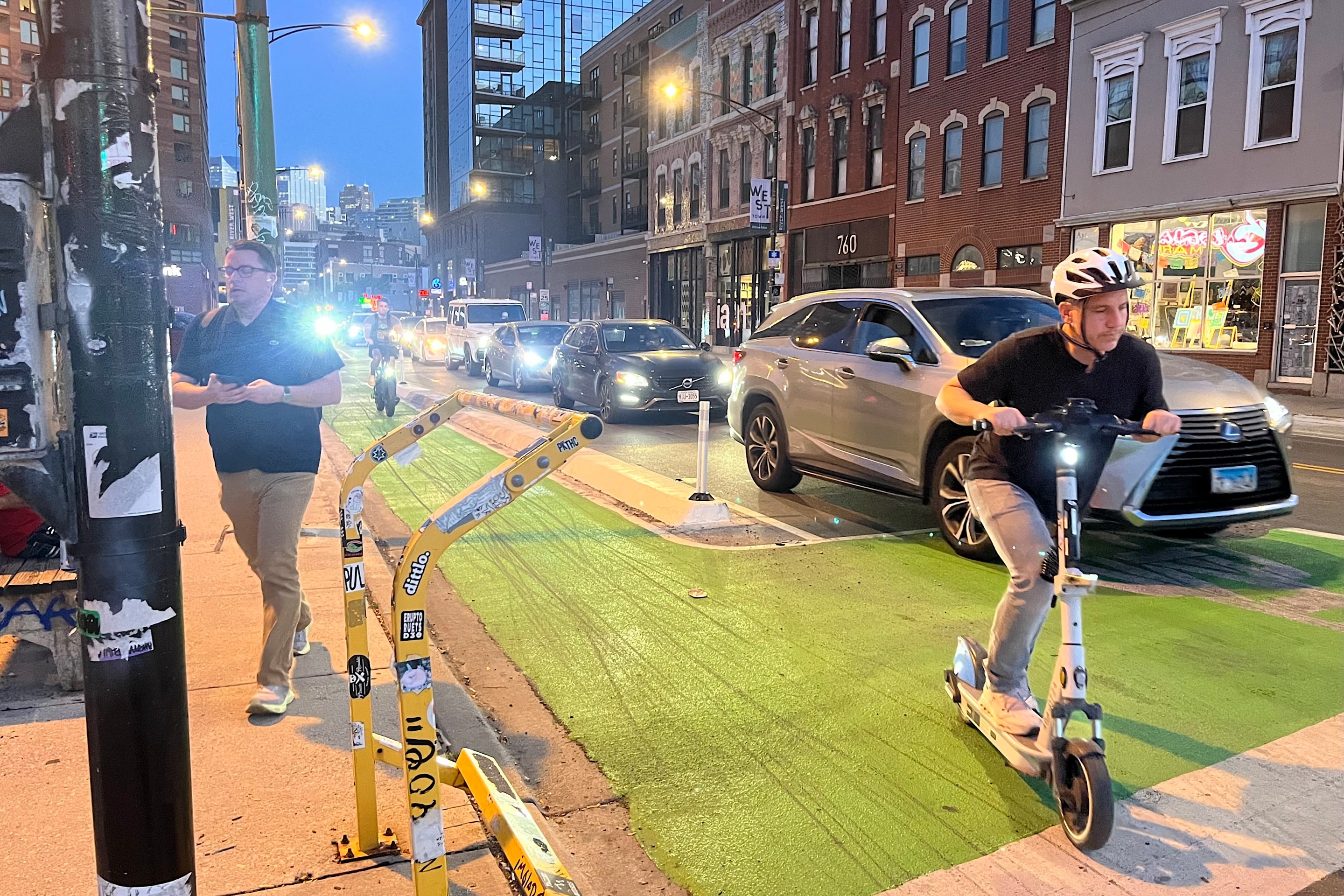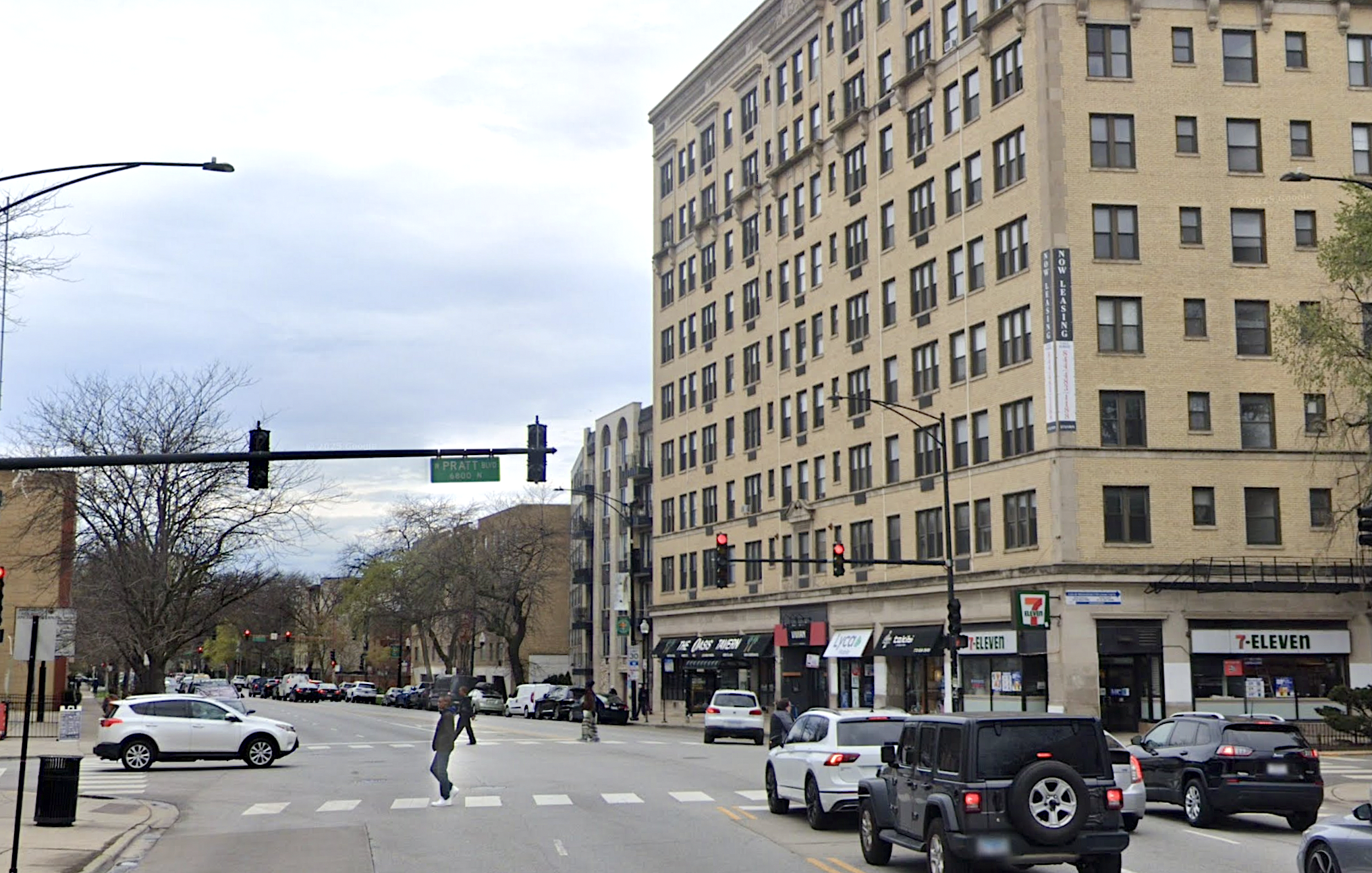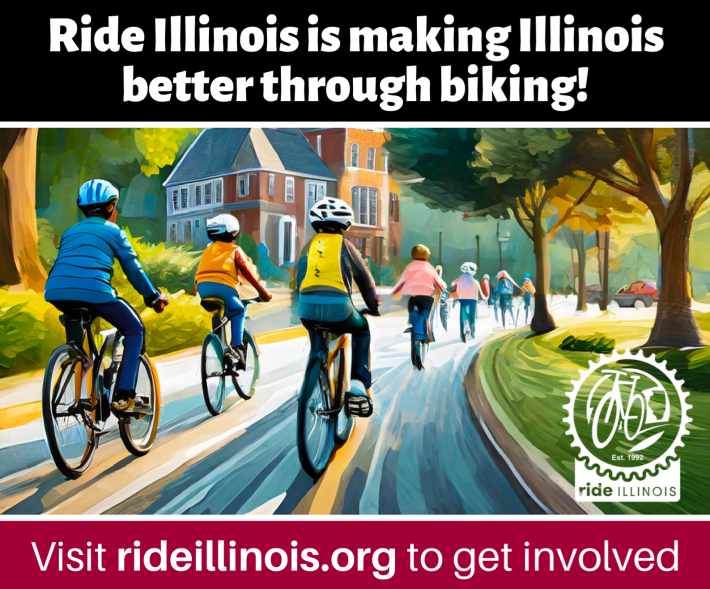
Yesterday, the City Council's Committee on Pedestrian and Traffic discussed the installation of new speed cameras this year. At the beginning of this year, Earlier this year, Chicago had 162 existing speed cams ,and Mayor Brandon Johnson announced plans to install 50 more. Officials said about 40 additional cameras were requested by alderpersons; 23 of which have been installed so far in April and May; 11 locations are currently being designed and installed; and the remainder are still under consideration.
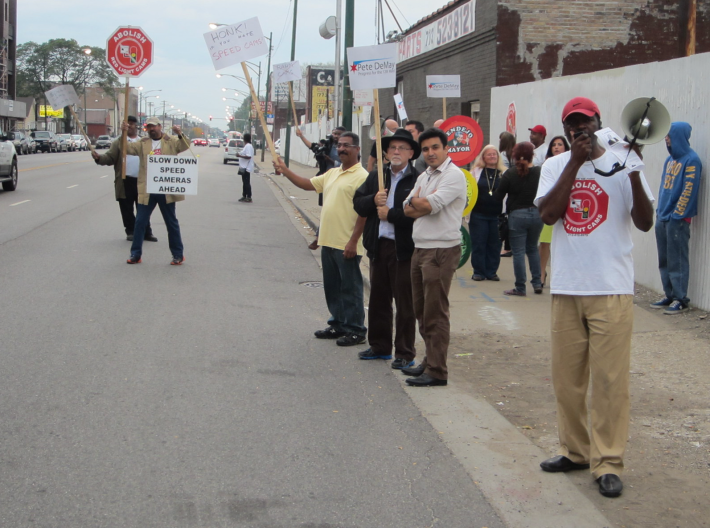
One of the first speakers during the public comment period at yesterday's hearing was a ringleader of Chicago's anti-cam crowd. Mark Wallace, a WVON radio personality, is the executive director of Citizens to Abolish Red Light Cameras. (The photo above is also at the top of CARLC's website, grabbed from a previous Streetsblog Chicago post.) "Our analysis of accidents pre- and post-speed camera implementation revealed little to no reduction in [crashes]," he said at the hearing.
That would be a troubling finding, if it was accurate. Here are the Chicago Department of Transportation's most recent numbers on speed cameras.

This analysis of all 162 cameras used 2012-2013 data as the baseline, comparing it 2022-2023 stats to measure the effects of the cams. Here are some of the takeaways from these findings:
• Between 2012-2013 and 2022-2023, while the total number of crashes rose by 28 percent citywide, it only increased by 2 percent near the speed cameras.
• While injury and fatal crashes went up by 19 percent citywide during that decade, they fell by 11 percent close to the cameras.
• Bicycle and pedestrian collisions fell by 14 percent citywide during that time, but went down by a whopping 46 percent near the cams.
• Speed-related crashes rose by 9 percent citywide during that period, but were reduced by 24 percent close to the cameras.
• While youth-related collisions went up by 28 percent citywide, the increase was only 15 percent near the cams.
So while many motorists like Wallace despise them, there's no question that speed cameras have been doing their job to reduce the number of serious and fatal crashes.
In contrast to Wallace, another commentator said they're in favor of automated enforcement."I'm here to state my support for speed cameras," that person said. "[Drivers] slow down when we know that the camera is there. He indicated that he would support income-based fines, but said ultimately speeding several mph over the limit is a choice. "It's pretty easy to not do that."
Here are 16 new speed cameras that were activated in April and are currently issuing tickets:
- 1455 W. Grand Ave. – Bickerdike Square Park
- 2716 W. Logan Blvd. – Lorenz Brentano Elementary School
- 2310 E. 103rd St. – Trumbull Park
- 2728 S. Archer Ave. – Palmisano Park
- 3510 W. 55th St. – Senka Park
- 8740 S. Vincennes St. – Mahalia Jackson High School
- 1341 W. Jackson Blvd. – Skinner Park
- 3665 N. Austin Ave. – James N. Thorp Elementary School
- 5059 N. Damen Ave. – Winnemac Park
- 6824 W. Foster Ave. – John W. Garvy Elementary School
- 220 W. Fullerton Ave. – Lincoln Park
- 5432 N. Central Ave.– James B. Farnsworth Elementary School
- 4118 N. Ashland Ave. – Lake View High School
- 4714 N. Ashland Ave. – Chase Park
- 5857 N. Broadway. – Broadway Armory Park
- 7115 N. Sheridan Rd. – Loyola Park
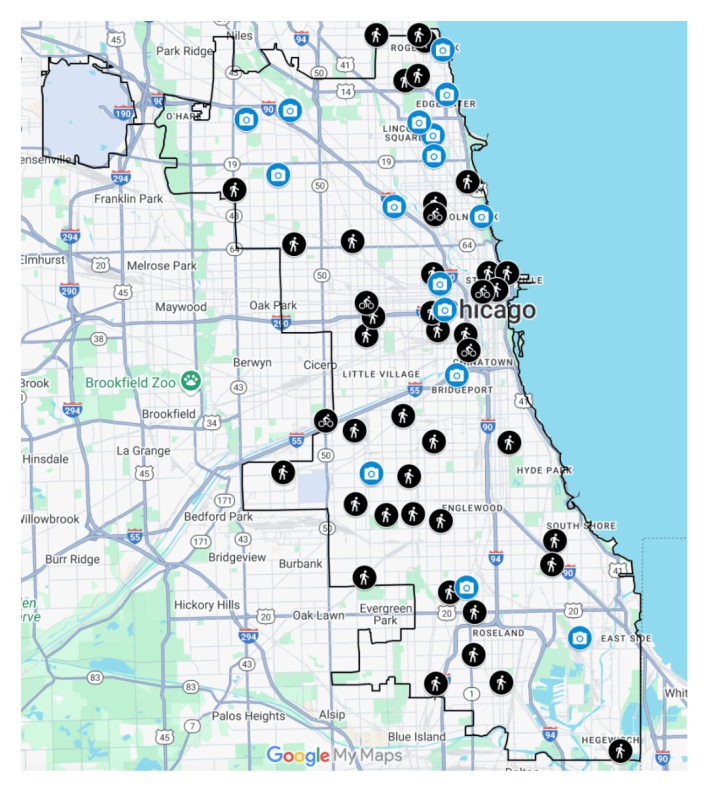
Most Chicago traffic fatalities take place on the South and West sides. However, few of these first 16 new speed cameras were located in these parts of town. During the City Council discussion just before last February's vote against lowering the city's default speed limit to 25 mph, some alders from these areas inaccurately claimed speed cams were concentrated in communities of color on the South and West sides.
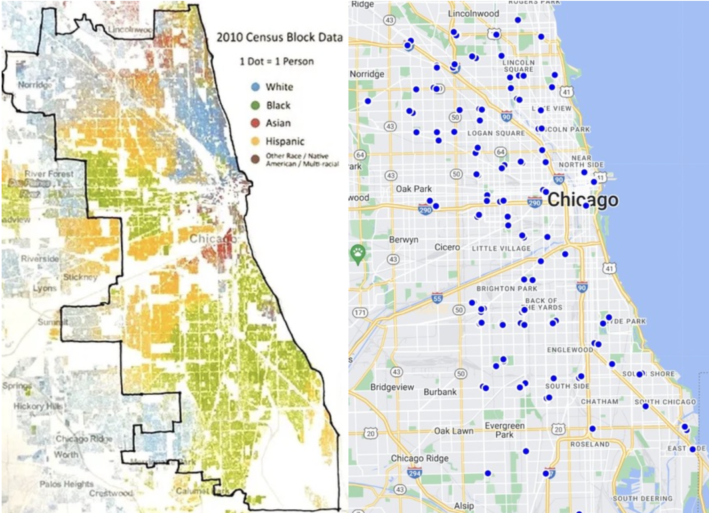
The Racial Dot Map of Chicago (This image shows 2010 data, but the demographics generally haven't changed dramatically since then) and a map of Chicago speed camera locations. Images: Racial Dot Map, CDOT
However, this year's next 11 speed cameras will be more evenly distributed than the first 16. Today CDOT announced that seven locations began issuing warnings on May 1 and will start issuing citations on June 15:
- 2640 W. Peterson Ave. – Green Briar Park
- 6614 N. Central Ave. – Edgebrook Park
- 442 E. 71st St. – Meyering (William) Park
- 8553 S. Martin Luther King Dr. – Cole (Nat King) Park
- 7733 S. Cottage Grove Ave. – Hirsch Metropolitan High School
- 3358 S. Ashland Ave. – Kucinski-Murphy (Vicki Rosebeth) Park
- 6146 N. Sheridan Rd. – Park 559
And CDOT said today that four locations will begin issuing warnings on May 15, with ticketing starting on June 30:
- 49 W. 85th St. – Perspectives High School
- 614 W. 47th St. – Tilden High School
- 1635 N. LaSalle Dr.– Lincoln Park
- 5941 N. Nagle Ave. – Rosedale Park
Locations of active speed cam can be found in the City Data Portal and on ChicagoTrafficTracker.com.
Answers to FAQs about the cam are available at "Automated Speed Enforcement Frequently Asked Questions."
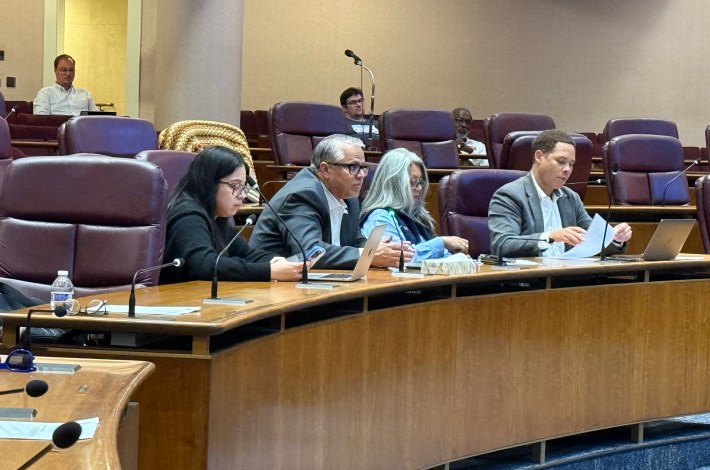
During the meeting, Ald. Gil Villegas (36th) said he wanted to make sure that the cameras are being installed in a manner that improves safety, without focusing on using ticketing as a revenue source. "We know that in Chicago, at one point, we led the nation in bankruptcies," he said. "As related to finance, we want to make sure that we're not putting our citizens in a position where we can reclaim that title."
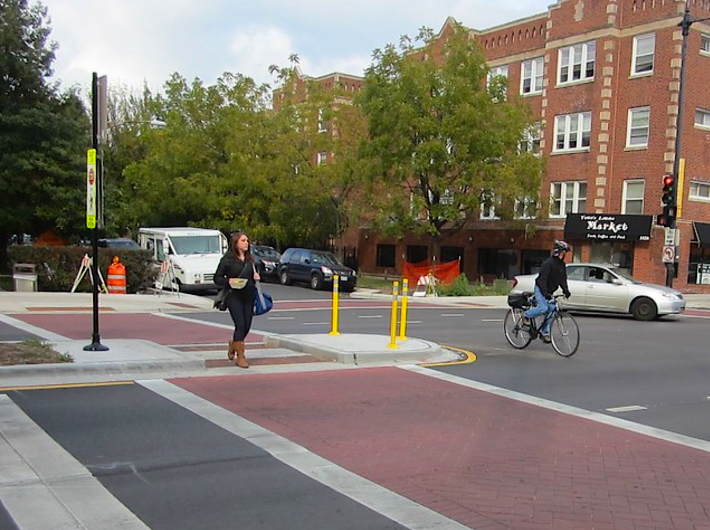
And while speed cameras have proved effective at preventing life-altering and deadly crashes, José Manuel Almanza, Equiticity's Director of Advocacy & Movement Building recently told Streetsblog infrastructure solutions are needed. "If it was up to me to wave a magic wand, there wouldn't be a single speed camera or red light camera in the city," he said. "But we would have streets designed to encourage drivers to drive at low and safe speeds, and also prioritizing pedestrians and cyclists and public transit and all that good stuff. But that's not the world we live in right now."

Did you appreciate this post? Streetsblog Chicago is currently fundraising to help cover our 2025-26 budget. If you appreciate our reporting and advocacy on local sustainable transportation issues, please consider making a tax-deductible donation here. Thank you.




